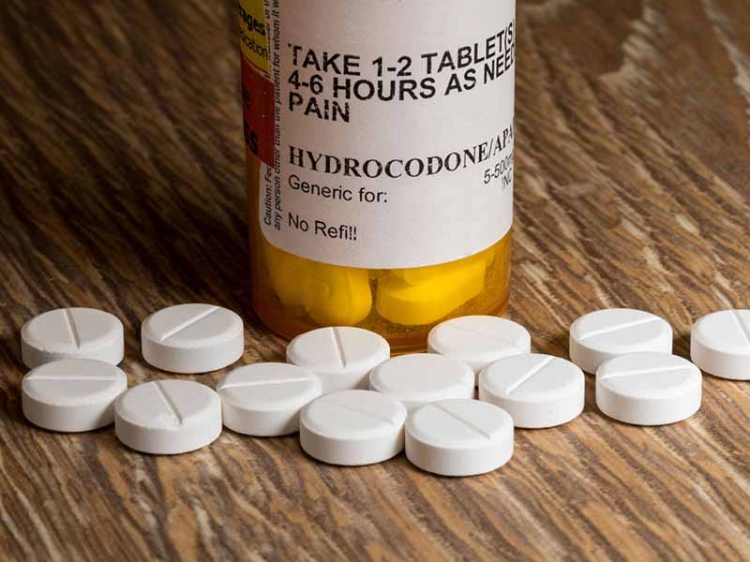About prescription opioids
Centers for Disease Control and Prescription (CDC)
People experience pain every day. Patients with pain should receive safe and effective pain care. Although prescription opioids can treat pain, they carry serious risks of addiction, overdose, and even death. Anyone who takes prescription opioids can become addicted to them.
What are prescription opioids?
Opioids are natural or synthetic chemicals that bind to receptors in your brain or body to reduce the intensity of pain signals reaching the brain. Doctors sometimes prescribe opioid medications to manage and treat moderate-to-severe pain. Common prescription opioid drugs include:
• Hydrocodone - such as Vicodin® and Norco®.
• Oxycodone - such as OxyContin® and Percocet®.
• Morphine - such as MS Contin® and Kadian®.
Prescription opioids for pain management
Prescription opioids can be used to treat acute-to-chronic pain (opioid therapy) and are often prescribed following surgery or injury, or for health conditions such as cancer.
Acute pain is pain that has lasted for less than a month and has a known cause, like an injury, trauma, surgery, or infection.
Subacute pain is pain that lasts longer than 1 month but not more than 3 months.
Chronic pain is pain lasting three months or more. It can be caused by a disease or condition, injury, medical treatment, inflammation, or even an unknown reason.
It is important to note that continuing opioid therapy during the subacute time frame might represent the start of long-term opioid therapy. The goal of any pain management strategy is to safely reduce pain and increase your ability to do everyday activities. Develop a pain management plan and follow up regularly with your doctor about your pain, and whether your plan is working or not. Understand that it can take time to reduce your pain.
Side effects of opioids
Side effects and risks of opioids cannot be avoided. In addition to the serious risks of addiction, misuse, and overdose, the use of prescription opioids can have several side effects, even when taken as directed:
• Tolerance — meaning you might need to take more of the medication for the same pain relief.
• Physical dependence — meaning you have symptoms of withdrawal when the medication is stopped.
• Increased sensitivity to pain.
• Constipation.
• Nausea, vomiting, and dry mouth.
• Sleepiness and dizziness.
• Confusion.
• Low levels of testosterone that can result in lower sex drive, energy, and strength.
• Itching and sweating.
Remember, your doctor is a partner in your pain treatment plan. It’s important to talk about any and all side effects and concerns to make sure you’re getting the safest and most effective care.
When the prescription becomes the problem
• More than 130 million opioid prescriptions were dispensed to American patients in 2022 — with wide variation across states.
• When prescribed an opioid, the best approach is to try the lowest possible dose in the smallest quantity.
• Opioids should only be used for as long as necessary. Generally, for acute pain, opioids are rarely needed for more than 7 days and often for 3 days or less.
The most common drugs involved in prescription opioid overdose deaths include:
• Methadone.
• Oxycodone.
• Hydrocodone.
• Morphine.
• Codeine.
• Fentanyl.
Before taking opioid medications for pain:
• Set treatment goals with your clinician for pain and function in your daily life.
• Talk to your doctor about pain treatment options, including ones that do not involve prescription opioids.
• Discuss the risks and benefits of opioid therapy.
• Talk openly with your doctor to make sure you’re getting care that is safe, effective, and right for you.
• Tell your doctor about your medical history and if you or anyone in your family has a history of substance use disorder.
• Opioid use disorder and the risk of overdose
• Opioids pose a risk to all patients. Anyone taking prescription opioids is at risk for unintentional overdose or death and can become addicted regardless of race, gender, income level, or social class.
Fast Facts:
• As many as one in four patients receiving long-term opioid therapy in a primary care setting struggles with opioid use disorder. Once addicted, it can be hard to stop.
• In 2022, nearly 9 million Americans reported misusing prescription opioids in the past year.
• From 1999 to 2022, nearly 310,000 people died from overdoses involving prescription opioids in the United States.
• Risk of opioid overdose and death increases at higher dosages and when taken for longer periods of time or more often than prescribed. It is also very dangerous to combine opioids with other drugs, especially those that cause drowsiness.
Overdose risk increases when your opioid medication is combined with:
• Alcohol
• Benzodiazepines (also known as “benzos,” including diazepam [Valium®] and alprazolam [Xanax®])
• Other sedatives like certain sleep medicines (such as Ambien® or Lunesta®) and muscle relaxants such as (Soma® or Flexeril®)
• Other opioids (prescription or illicit, including heroin)
• Talk to your doctor about any other medications you are using. Work out a plan to call your doctor if you continue to experience pain. Also ask about the serious side effects of opioids so you and your family know when to call a doctor or call 911.
Risk Factors for Overdose
Anyone who uses opioids can experience an overdose, but certain factors may increase risk that your clinician can consider when prescribing:
• Having a history of overdose or a substance use disorder.
• Having sleep apnea or other sleep-disordered breathing.
• Taking higher dosages of opioids.
• Returning to a high dose after losing tolerance for it (due to tapering off on the dosage or not taking an opioid for a long while).
• Taking benzodiazepines with opioids.
• Having kidney or liver failure.
• Being 65 years and older.
Death from an opioid overdose happens when too much of the drug overwhelms the brain and interrupts the body’s natural drive to breathe.
